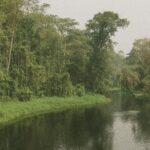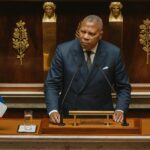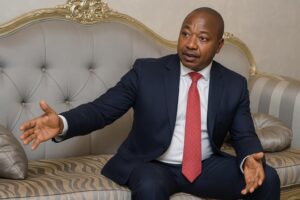Brazzaville hosts vivid exhibition
Photographs the size of doorway panels now line the white walls of Brazzaville’s Russian House, telling an eight-decade story of Congo and the United Nations. The exhibition opened on 15 October 2025 amid camera flashes, live drums and expectant whispers.
Opening night lights up Russian House
Mrs Lydie Pongault, Minister of Cultural, Artistic, Touristic and Leisure Industries, cut a broad sky-blue ribbon before inviting guests to wander. Beside her stood Acting UN Resident Coordinator Agnès Kayitankore and Russian House director Maria Albertovna Fakhrutdinova, their smiles reflecting both ceremony and camaraderie.
Diplomats from at least a dozen embassies filled the hall, smartphones raised. Each snap captured a slice of shared history and, perhaps, a subtle reassurance that multilateral dialogue remains alive despite the headlines warning of fragmentation across the globe.
Eight decades of shared ideals
The first half of the 27-panel journey leans heavily on sepia images from 1960, year of Congo’s UN admission. In one frame, delegates raise their hands; in another, Brazzaville students cheer under fluttering blue flags, hopeful symbols of an untested republic.
Curators juxtapose those early snapshots with footage of modern Security Council debates where Congolese representatives advocate conflict prevention, climate resilience and equity. The timeline underlines a constant thread: a small nation’s voice can resonate globally when anchored in the UN Charter.
From independence to resilience
Panels devoted to the late 1970s recall Congo’s call for majority rule in Southern Africa, while 1990s images show peacekeepers training local engineers after civil unrest. Viewers trace a narrative of crisis met with consultation rather than unilateral force.
Recent photographs spotlight Brazzaville’s adoption of the Voluntary National Review on Sustainable Development Goals. Children in green school uniforms plant saplings alongside UN volunteers, illustrating ambitions to pair environmental stewardship with youth employment in neighborhoods edging the Congo River.
Impact on daily lives
The second segment dives into households, maternity wards and village markets. In Makélékélé District, a midwife displays solar-powered incubators funded through a UN-government partnership; neonatal mortality there reportedly dropped by half over five years, a fact the accompanying caption highlights soberly.
Elsewhere, a portrait of farmer Josiane Mbozo frames her holding drought-resistant cassava cuttings. Text nearby credits joint research with the Food and Agriculture Organization for yields that helped her cooperative secure steady prices during last season’s erratic rains.
Voices from the hall
Standing before Josiane’s image, university student Romaric Mabiala whispered, “I never realized the UN projects reached my grandmother’s village.” His comment drew nods from older visitors who recalled childhood vaccinations under UNICEF tents along dusty interior roads.
Ambassador Serge Mombouli, pausing by a 2015 photo of peacekeepers clearing flood debris, applauded the show’s balance. “It is not propaganda; it is memory,” he said, adding that cooperation succeeds when “people see their own faces in the work being done.”
Looking ahead to creative bridges
Minister Pongault used the occasion to pitch future exchanges in film, heritage restoration and digital culture. She argued that cultural industries, now valued at 4.2 percent of national GDP, could double if aligned with UN training schemes and diaspora expertise.
Acting Coordinator Kayitankore echoed the call, insisting the next decade demands “innovative multilateralism” anchored in creative solutions. She cited Congo’s young demographic majority as both challenge and potential, urging agencies to invest in skills that turn talent into decent jobs.
Director Fakhrutdinova, whose institution has recently expanded French-language courses, promised seasonal photo masterclasses pairing Congolese and Russian artists. Such encounters, she believes, nurture the empathy needed for dialogue long after diplomatic communiqués fade from front pages.
The exhibition remains open free of charge for three weeks, with guided tours each afternoon. School groups have already reserved slots, and organizers expect a surge during United Nations Day festivities on 24 October, extending the narrative beyond the gallery walls.
As visitors depart, many stop at a feedback booth to record short videos. Their messages—gratitude, curiosity, occasional critique—will be archived for a digital capsule planned for 2045, the UN’s 100th year. History, it seems, keeps demanding new storytellers.
Practical tips and city buzz
Practical information panels near the exit detail bus routes, taxi fares and average ride-share costs from key districts to the Russian House, mindful of students’ tight budgets. Organizers negotiated a temporary 30 percent discount on city-run bus line H3 for visitors holding stamped tickets.
A mobile website, launched alongside the show, offers a virtual tour for residents of Pointe-Noire and interior towns unable to travel. High-resolution zoom lets users inspect each caption, while an audio guide in French, Lingala and Kituba broadens accessibility.
Local cafés are joining the celebration. The adjacent Terrasse des Arts now serves a limited-edition ‘Blue Hope’ smoothie made from moringa and pineapple, with 10 percent of proceeds directed to a UN Children’s Fund literacy project. The gesture merges refreshment with civic solidarity.
Early reviews suggest the drink already rivals the city’s classics.






















